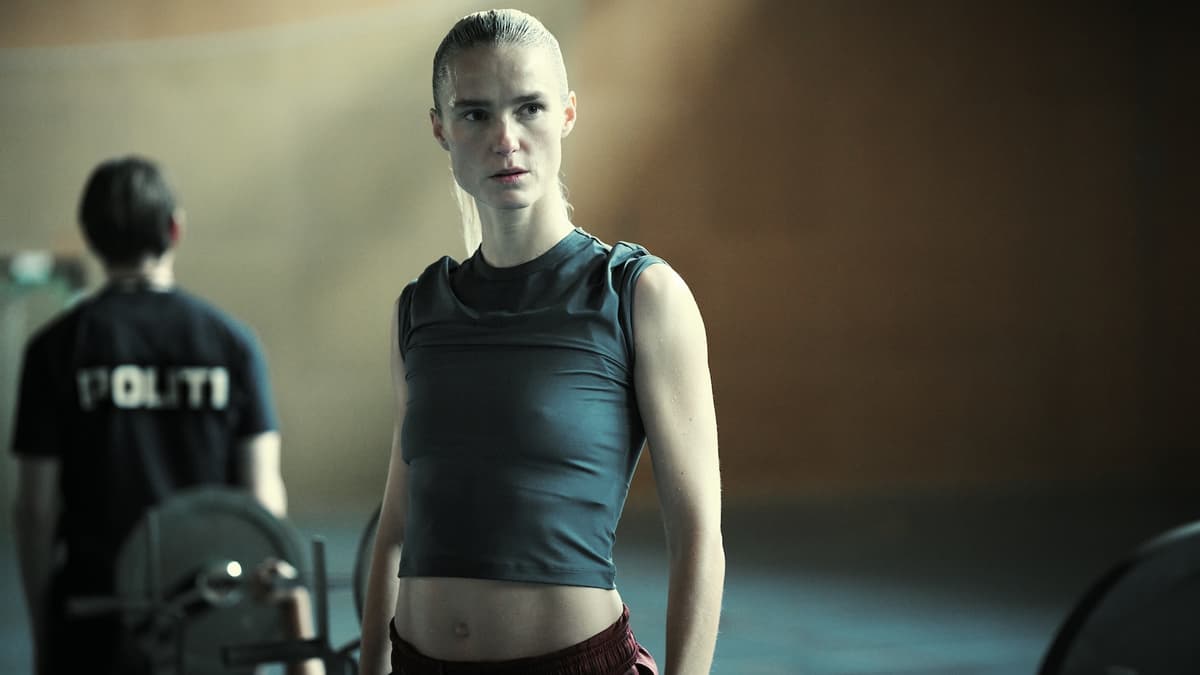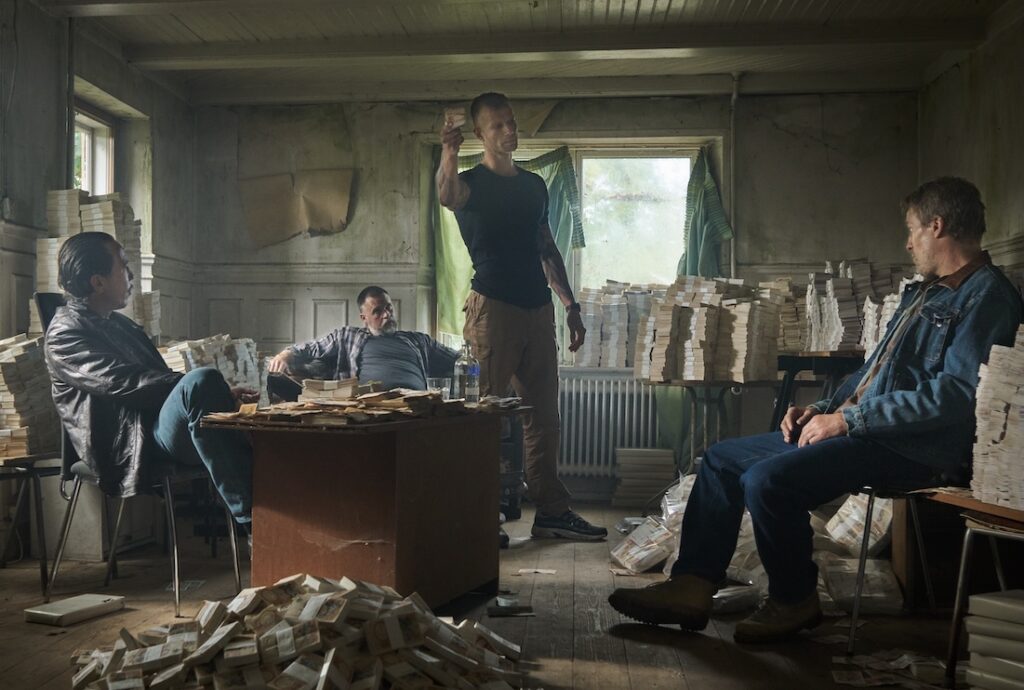While ‘The Quiet Ones’ Is a Sometimes Nail-Biting Entertainment, It Is More Confusing Than It Should Be
The screenplay by Anders Frithiof August is based on a true event, the so-called Copenhagen Job bank robbery of 2008, the biggest mystery of which is that a majority of the cash is unaccounted for.

Pity Amanda Collin, a Danish actress who cuts a stark figure in Frederik Louis Hviid’s “The Quiet Ones” but really isn’t given much to do. Ms. Collin plays Maria, a security guard at a large facility outside of Copenhagen that, among much else, stores large quantities of cash for the city’s banking institutions. She’s a commanding presence, our Maria, stern in demeanor, taut in physique, and driven to succeed. Too bad she’s little more than an addendum to Mr. Hviid’s heist picture.
One could conjecture that Ms. Collin’s character has been included as a love interest or eye candy, and in both cases the suppositions fall flat. There is love in “The Quiet Ones,” but it isn’t romantic, it’s parental: Our anti-hero, an aspiring boxer named Kasper (Gustav Giese), has a young daughter who he clearly adores, Sara (Dagmar Madicken Greve Halse).
As for eye candy: Mr. Kiese has that designation covered as well. Notwithstanding a vivid scar on his cheek, Kasper is some kind of Nordic hunk: Imagine a young Max Von Sydow ready to tour on the Chippendale’s circuit. Handsome, ripped, tight-lipped, and flinty, Mr. Giese spends a good part of the proceedings in the tightest of tighty-whiteys.
The screenplay by Anders Frithiof August is based on a true event, the so-called Copenhagen Job. In 2008, a group of 14 men broke into Dansk Banke and stole 60 million kroner — roughly $10.5 million. The operation was, as one journalist described it, “a symphony of destruction,” an elaborately orchestrated robbery that involved garbage trucks set afire, blocked roads, construction equipment, and clusters of nails meant to puncture the tires of approaching law enforcement vehicles.

Henrik Ohsten via Magnet Releasing
Did they get away with it? Let’s just say that the biggest mystery surrounding the actual crime is that a majority of the cash is still unaccounted for. Mr. Frithiof’s script provides a fictional fate for the ill-gotten riches — it involves rural Spain, a deep hole, and a box of rat poison — but, alas, not the clarity of personality or purpose that makes for a top-notch thriller. For this he shares the blame with Mr. Frithiof in creating a sometimes nail-biting entertainment that is more confusing than it should be.
The movie opens on a tense and brutal note in 2007 as we watch a group of masked men corner an armored car, attempt a robbery of its contents, and come away with no money and two deaths on their hands. Flash-forward a year in which we meet Kasper, sparring hard with his trainer and hoping against hope to make a name for himself in the ring. The trouble is that Kasper is getting old — he’s 30-ish — and seems not entirely convinced by his career choice.
There are better incentives than desperation. When Kasper finds himself battered, bruised, and beaten in his initial bout, the desperation increases. When he’s approached about a bank job by a brooding player known as the Moroccan, Slimani (Reda Kateb), Kasper, a former criminal renowned for his skills at planning, signs on. But then a news story flashes across the television screen about a separate group of bandits that puts the city’s police force on high alert. Slimani thinks twice and gets out of town while the getting is good. Kasper has other ideas.
The Scottish poet Robert Burns wrote of how “the best-laid plans of mice and men often go awry.” The same is true of bank robbers and, for that matter, filmmakers. Messrs. Hviid and August have made a thriller whose machinations are rendered less involving by the short-shrifting of character development and a failure of logistics. The heist is a hard-to-parse hodgepodge of people, places, and things. Where are we and who is doing what? Cinematographer Adam Wallensten doesn’t help by erring on the side of darkness.
“The Quiet Ones” picks up in its final moments, wherein we learn about the consequences of crime and the destiny of certain individuals. Still, most of these individuals aren’t much more than placeholders and the ending is neither as ironic nor as bitter as it portends. Should worse come to worse, the filmmakers might want to think of a vehicle for the gritty, lean, and taciturn Ms. Collin. She’d be an ideal candidate for, say, a feminist recasting of “Dirty Harry.”

